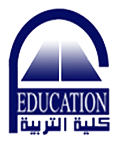Computer-Assisted Language Learning (CALL) for 4th Year EFL Student Teachers is a complementary language teaching methodology course, with a specific focus on computer-assisted language learning approaches, methods, techniques and procedures as well as the computer-based tools, devices, applications and facilities that can be used to facilitate language learning. With the dominant use of computer and Internet technologies nowadays, it has become necessary that our teaching methodology courses should be updated accordingly; they should include insightful guidance into how to teach English as a foreign language with the aid of computers and the web – including laptops, tablets, and smart phones. The potential to enhance English learning through technology in general and computer-based tools, applications, devices and facilities in particular, has become increasingly a hot topic today. Practically speaking, the ability to use, merge and integrate technology - including computer and web-based tools - into the classroom is a core skill for English language teachers in the 21st century. From a literacy perspective, English language teachers need to cope with learners’ new literacy practices (e.g. social networking, composing messages on mobile phones, using WhatsApp in daily communication, sharing resources online, etc.) in order to properly reach them. If teachers do not consider these new literacy practices in their teaching, a literacy gap will appear. The course is the first CALL course offered at Faculty of Education, Assiut university based on the new bylaws and regulations introduced in the academic year 2017/18. It introduces pre-service English teachers to CALL with the aim of focusing on the ‘how to’ aspect of integrating computer-based technologies into English language teaching and learning contexts. It takes into consideration the dialogic relationship and the complex interaction between language learning content (i.e., reading, writing, speaking, listening, vocabulary and grammar), pedagogy and language instruction (e.g., communicative language teaching and task-based approaches), and technology (i.e., affordances and constraints of different technological tools) with an awareness of the social and linguistic implications. In addition, the course aims to develop a hybrid CALL practitioner, developer, researcher, and trainer in this field. Thus, this course addresses TESOL fundamental concepts, knowledge, skills, and attitudes that enhance pre-service teachers’ technological competencies and promote their integration of Computer Assisted Language Learning (CALL) technology into English language-teaching settings and curriculum with confidence, knowledge, and practice. Therefore, the main goals of the course are represented in: 1. acquainting pre-service English language teachers with the foundational knowledge, competencies and skills in technology in general and computers and the Web in particular, for professional purposes; 2. developing pre-service EFL student teachers’ theoretical understanding of the relationship between computers and the Web on one hand, and English language teaching/learning on the other; 3. expanding pre-service EFL student teachers’ knowledge base in TESOL/TEFL to encompass new CALL theories, approaches, strategies, methods and techniques; 4. developing pre-service EFL student teachers’ computer-based and language-related literacy practices; 5. exploring the possible application of computers and Web-based technologies in English language learning; 6. assisting pre-service EFL student teachers in using computer-based technologies and facilities in the classroom for a variety of language learning purposes; 7. integrating pedagogical knowledge and skills with technology to enhance language teaching and learning; and 8. applying technology and computer-based practices into instruction (e.g. record keeping, feedback, and assessment). Mahmoud Abdallah Assiut, Egypt (July, 2021)
Research Date
Research Department
Research File
Research Journal
Faculty of Education, Assiut University
Research Member
Research Website
https://www.academia.edu/50043990/Computer_Assisted_Language_Learning_CALL_for_4_th_Year_EFL_Student_Teachers
Research Year
2021
Research Abstract


